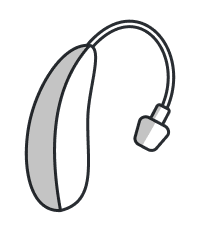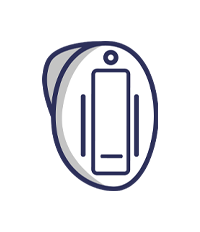Discover Which Hearing Aids Are Right and Wrong For You
Don’t get snookered into buying the wrong hearing aid. Sure, you could buy an old-style hearing trumpet for peanuts online, but unlike a high-tech hearing aid, that would make you look, well, unusual to put it mildly. Currently, there are seemingly thousands of options, with everyone calling almost anything a hearing aid. Thanks to the internet, there are lots of ways to waste money on hearing aids that won’t work too.
Consider this: Given the importance of your hearing and the importance of being socially active, conversational, and keeping your brain humming along – doesn’t it make sense to get expert advice?
The latest hearing aids offer unprecedented clarity of sound, comfort, and functionality. Selecting the best hearing aids for you depends on finding one that can address your level and type of hearing loss. Schedule an appointment, and we’ll be happy to walk you through the best options for you.


Which types of hearing aids should you consider?
Hearing aids come in a range of types and styles. Here’s an overview of the primary types, along with our recommendations.
Behind-the-ear (BTE) hearing aids
Recommended for: people with moderate to severe hearing loss.
BTE hearing aids are designed to give your ears an incredible boost in power. The hard plastic casing fits directly behind the top of your ear where it’s easily hidden by your hair.
The custom earmold is shaped to match the exact contours of your ear canal. It comes in a variety of colors, including clear, pink, and tan to decrease visibility even more. Many people find choosing a color that blends in with your hair or skin. The BTE hearing aid has a wide variety of programming features and options that may be customized to meet your hearing needs.
* Rechargeable options are available
Receiver-in-canal (RIC) or receiver-in-the ear (RITE) hearing aids
Recommended for: mild to severe hearing loss.
Our RIC or RITE hearing aids are perfect for active adults. The directional microphone technology makes it easier to understand conversations in crowded environments by detecting and amplifying the target speech signal and decreasing the background noise.
Visibility isn’t a problem. You can attend business meetings, parties, and other social events without anyone even knowing you’re wearing hearing aids. You can hide the small hard plastic casing on this device behind your ear or underneath your hair.
The microphone picks up sound and carries it through an ultra-thin wire directly into a speaker that fits invisibly into the ear canal or in the ear. The RIC hearing aid can come with programming features including telecoil, automatic programming, volume or programming controls, and alert signals.
* Rechargeable options are available
In-the-ear (ITE) hearing aids
Recommended for: people with disabilities or dexterity challenges who have moderate to severe hearing loss.
ITE hearing aids are true custom-designed hearing aids. The entire hearing aid is molded to match the contours of your outer ear. The hard plastic casing forms to the exact shape of your ear making it fit snugly. There’s also an ITE style available that only fills the lower part. ITEs do a great job of amplifying sound.
You can add features to an ITE hearing aid to make it hassle-free, including telecoil (a feature that makes it easier to hear when you’re talking on the phone), ear-to-ear communication, and automatic programming. ITE hearing aids come in a variety of colors to match your skin tone, including pink, beige, cocoa, and brown.
* No more fiddling to change batteries, rechargeable options are available.
Invisible-In-the-canal (IIC) hearing aids
Recommended for: mild to moderately severe hearing loss.
Invisible-in-canal (IIC) hearing aids are designed to be “invisible” by fitting farther into the canal. Also custom-made for your ear, these are typically good options for less severe hearing loss.
Completely-in-canal (CIC) hearing aids
Recommended for: mild to moderately severe hearing loss.
Some of the smallest hearing aids available, completely-in-the-canal (or CIC) models of hearing aids are designed to sit entirely within your ear canal. This means that there will be no portion of the hearing aid that sticks out.
* Rechargeable options are available




